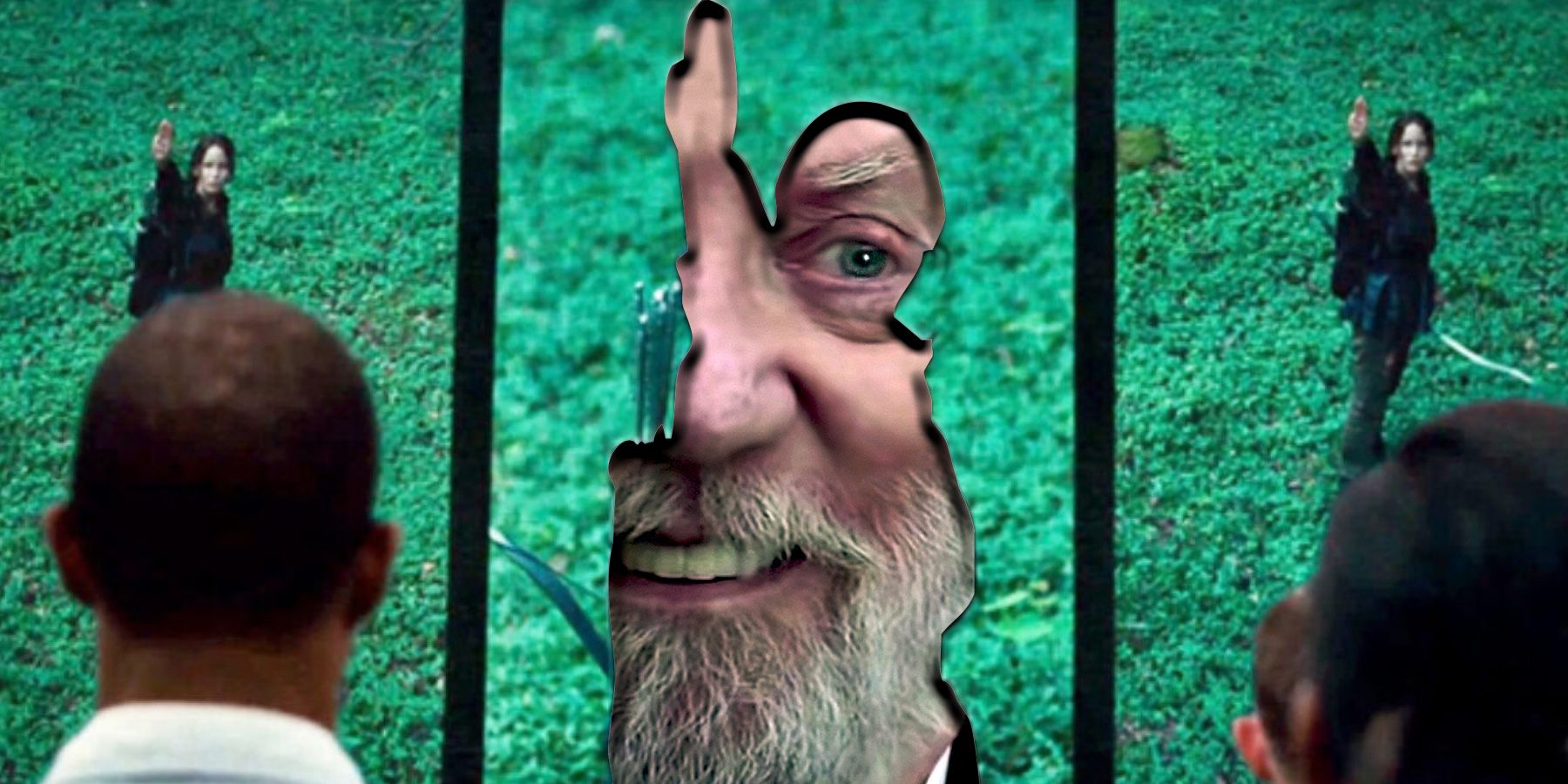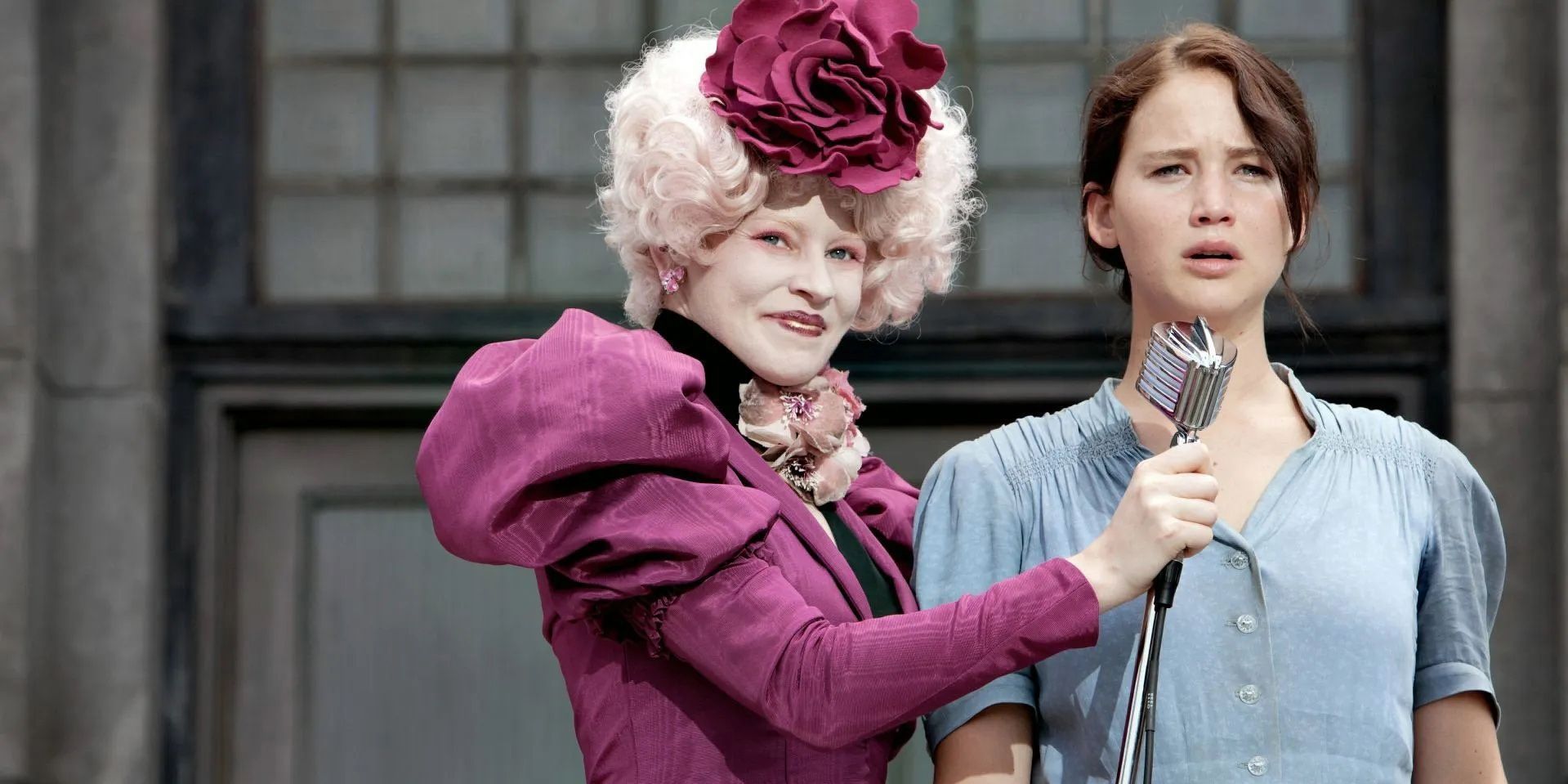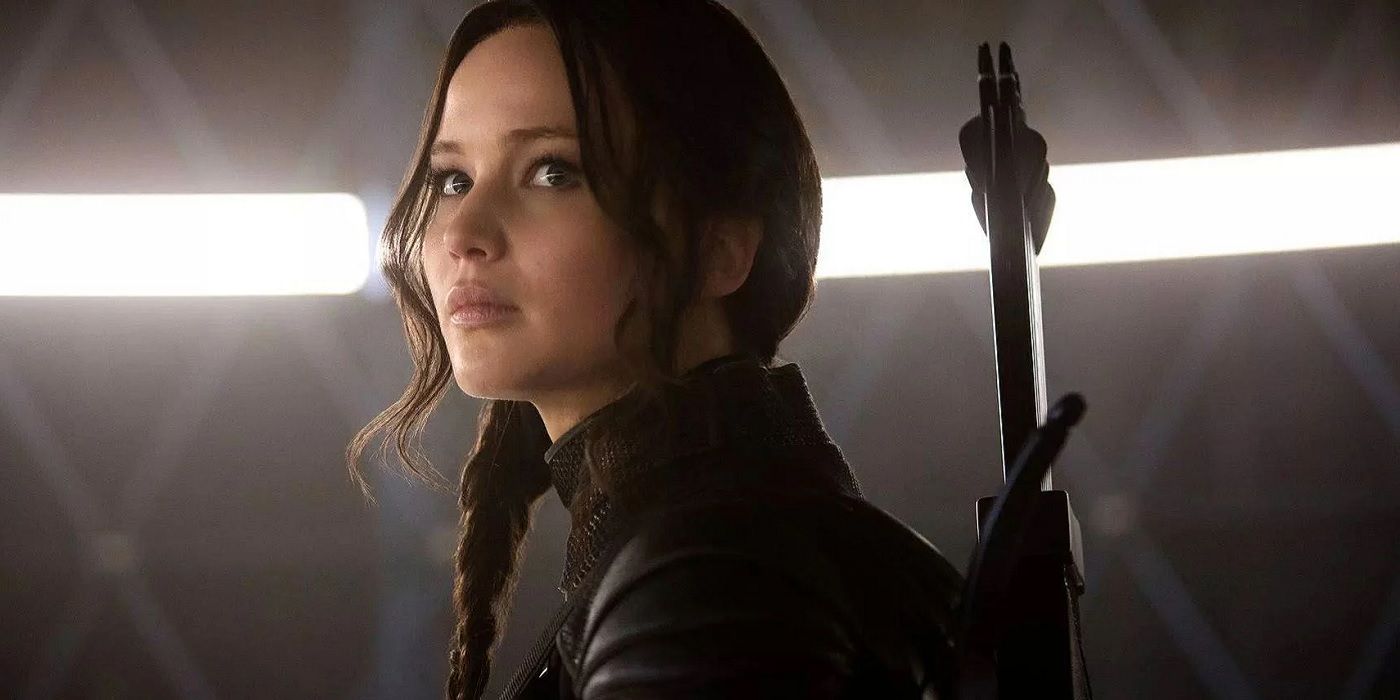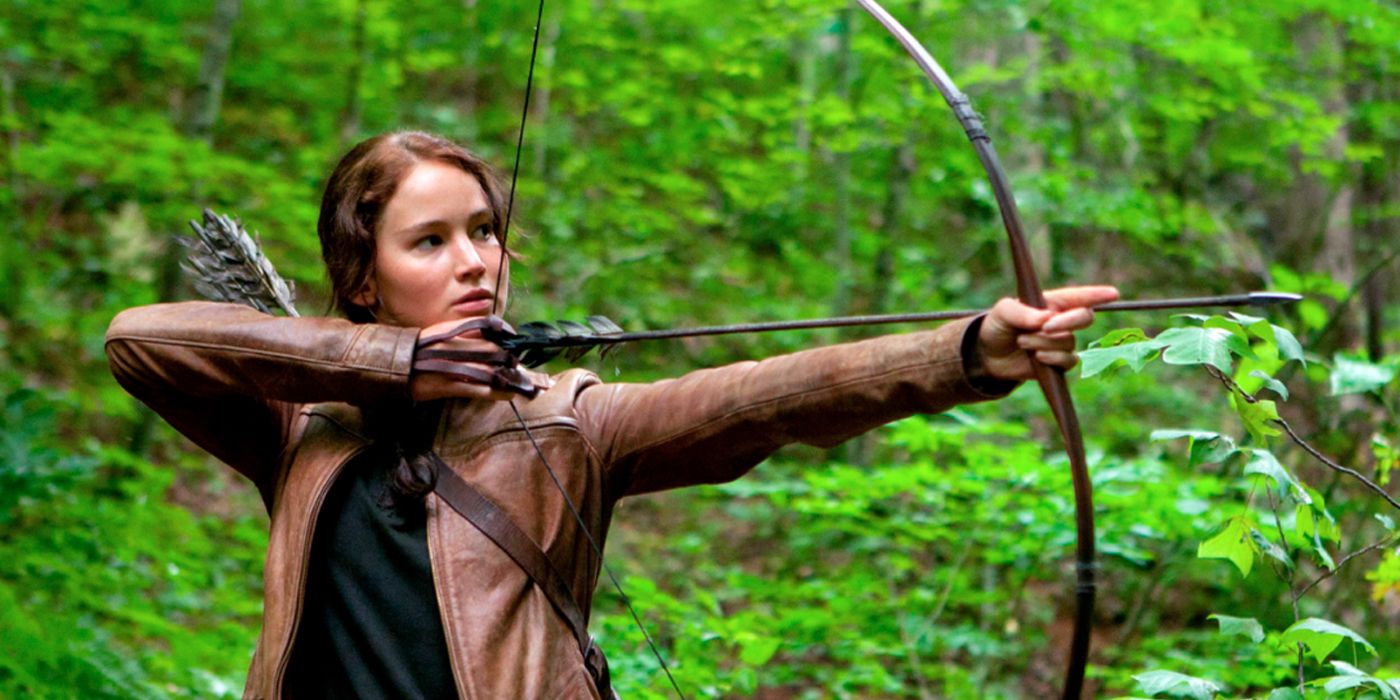It seems impossible that the final book in Suzanne Collins’s Hunger Games trilogy was released only twelve years ago. The series, now a cultural touchstone, seemed at the time to come out of nowhere: the first book had debuted only four years prior, but by the time the trilogy concluded in 2010, it had already established its legacy as a pop-culture staple.
Fans caught up in the rising frenzy would have to wait only two more years to see the struggle of their reluctant heroine realized on the big screen, in an A-list adaptation that would easily channel cultural mania into box office success. The resulting films are, on the whole, worthy adaptations. Yet the first movie stands out for failing to capture the momentum and pith that turned the books into a phenomenon.
The Hunger Games follows Katniss Everdeen, a teenage girl in the lowly coal-producing district of a dystopian remnant of the United States known as Panem. Every year, each of Panem’s twelve districts must send two tributes—a girl and a boy, chosen by random lottery—to the arena, where their battle to the death will be televised for the entertainment of the aristocratic Capitol that rules over Panem.
When Katniss’s sister, Prim, is selected to be the female tribute for District Twelve, Katniss volunteers to take Prim’s place. Competing alongside “the boy with the bread”, Peeta, who once saved her from starvation, Katniss will ultimately become a symbol for the burgeoning resistance in Panem—a celebrity figurehead for the all-out revolution in Mockingjay.
To understand the fundamental flaws of the first movie, it is important to understand Katniss’s progression across the entire trilogy. The first book, The Hunger Games, is primarily about survival, as Katniss must outlast the twenty-two other tributes who are also trying to kill her (and the arena, which is trying to kill them all).
The small act of rebellion with which Katniss concludes the Games will fuel an already-brewing rebellion of the districts against the Capitol, but Katniss’s defiant spark is hasty and nearsighted. At the very end of the book, her larger enemy reveals himself—President Snow, who will become the antagonist of Catching Fire. Katniss spends much of the second book fighting to appease him, not defeat him.
Again, it is only at the end that she sees a bigger picture, leading to a second act of rebellion—a strike against the class system that governs Panem and imprisons its people, which will become the antagonist of Mockingjay. Throughout all three books, Katniss is rarely more than a pawn in the manipulations of establishment and revolutionaries alike, whose agendas often conflict with Katniss’s consistent personal prerogative: to keep her family fed, her friends safe.
If lack of agency makes Katniss something of a controversial heroine, she is, nonetheless, a compelling one. A huge part of what makes her story interesting—and the books eminently readable—is Collins’s stylistic choices. The Hunger Games books are written entirely in first person, from Katniss’s perspective, and in the notoriously-tricky present tense.
This allows the reader to discover the world of Panem in tandem with the character of Katniss herself, as exposition is usually delivered through recollection, rather than detached description. Moreover, the events of the present are conveyed as they happen, so the reader may react alongside the protagonist. This immediacy confers intimacy to the reader, for whom there is no story without Katniss—regardless of her role in the greater story of Panem.
Unfortunately, this framing also sets any adaptation at a disadvantage. First-person narration is not unheard-of in movies, but it is also not common—and certainly not in gritty dystopian dramas. Writer/director Gary Ross, however, seems to have approached this problem by ignoring it altogether: instead of finding creative ways to make the camera lens into Katniss’s lens, he racked focus to the larger narrative, inventing whole scenes to portray the power players of the Capitol, who are only remote figures in the first book.
This both-sides approach does more than reduce Katniss’s screen time—it undermines the narrative tension of the overarching plot. Snow’s first meeting with Katniss, after the Games and at the end of the movie, is meant to be a subtle (thought precipitous) cliffhanger: Katniss has prevailed in the Games, but her battle has only just begun. Instead, it is just another scene in an ongoing battle between Capitol and Katniss.
Despite the fact that verb tense has no analog in the language of cinema, there is still an argument to be made that this aspect of the book could have been better translated to screen. It is unusual for an entire book (let alone a series) to be written in present tense, but the effect of this choice on a reading audience is undeniable: it heightens tension and makes the action feel more palpable. The Hunger Games, once opened, is hard to put down and can be read in only a few hours.
Ross’s adaptation is also a few hours, but it lacks anything like the flow of the book—bloated and stilted, with a runtime better suited to a Christopher Nolan thinkpiece than an action-packed YA adaptation. There are too many dreamy establishing shots, too many scenes of Capitol intrigue—too many scenes without Katniss. Much has been added to develop the world of Panem and the conflicts of the trilogy as a whole, but none of it is filtered through the girl whose story is actually being told.
Without Katniss’s internal narration—without insight into her private thoughts—there were other elements, like dialogue and imagery, that could have been used to show who Katniss is and how she interacts with other characters. But much of the dialogue is devoted instead to offering exposition, explaining the world without regard to characters’ experience of it. This reduces narrative logic—as when Peeta chooses to train alone—but it also leaves even less space to develop characters and conflicts.
When Haymitch points out that Katniss needs to be more likable, his ridicule feels gratuitous, as the movie has not used its dialogue to establish why others would not like her. More broadly, this contraction of characters undermines relationships that will evolve in subsequent installments. Viewers who later rejected Peeta as the resolution of Katniss’s romance plot can be forgiven their skepticism, considering that meaningful interactions are too scant to provide a foundation for a lasting ship.
As for characterizing Katniss through imagery, Ross actually omitted a core scene establishing her eventual role in the revolutionary plot: the gifted origin of the mockingjay pin, which book Katniss receives without comprehending its significance. The pin is an early signal of Katniss’s lack of agency—a symbol that is assigned to her, just as her personal symbolism is assigned by others. In the movie, she adopts the mockingjay intentionally, an alteration which suggests an entirely different direction for her character.
Similarly, movie Katniss initiates the three-fingered salute that will also become a revolutionary symbol, whereas book Katniss is thus saluted by the other members of her district when she volunteers as tribute. In fact, the overall visual language of the movie is insipid and cliché, from using (poorly edited) shaky cam to emulate chaos, to exaggerating the gritty setting with a tint so blue that the opulent blue interior of the tribute train looks almost cartoonish (not to mention what the color does to Katniss’s hair, flattening it into an unnatural black mass).
Of course, all of this would be a problem if The Hunger Games was a movie about Katniss Everdeen, a girl whose desperation is manipulated for entertainment—who is extraordinary for the very fact that she is so ordinary. But it is not about her. Gary Ross was unable to return for Catching Fire; he told The Hollywood Reporter that the studio had not given him enough time “to write and prep the movie [he] wanted to make.”
Viewers might reasonably wonder what that movie was—whether that movie would have cast Katniss in the role of revolutionary leader, further carving away the moral complexity and dramatic tension that catapulted Collins’s series to literary superstardom in a matter of four years. Yet there is one thing that the same viewers could reasonably infer: that movie would not have been Catching Fire, any more than this movie is The Hunger Games.




